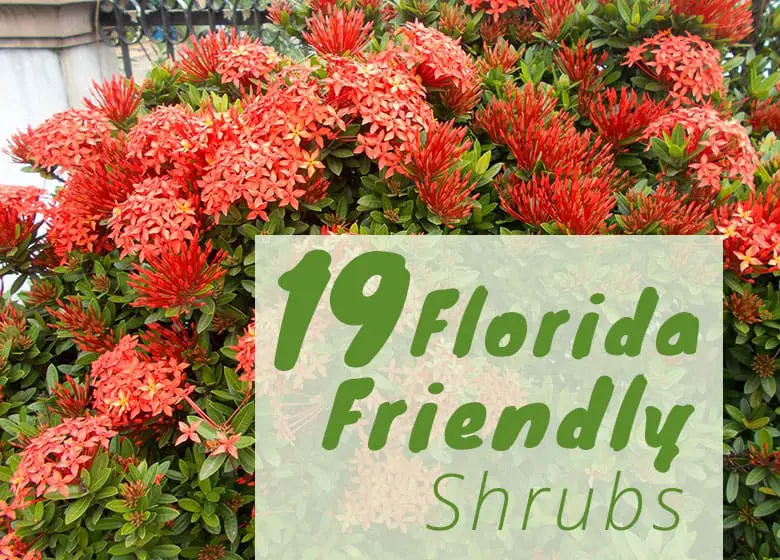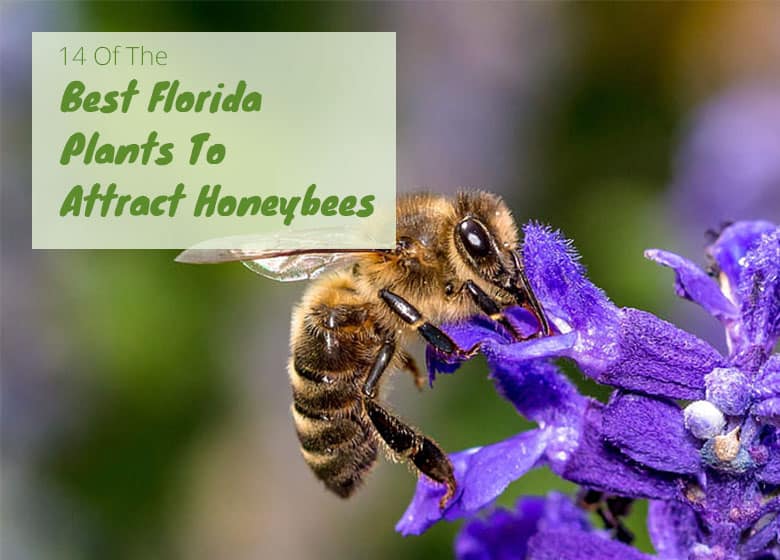
What are some of Best Florida Plants for Honeybees?
Florida’s subtropical climate makes it possible to grow a host of different honeybee-friendly plants year-round. Some of the best Florida plants for attracting honeybees are Anise, Black-eyed Susan, Lavendar, MArigolds, Oleander, and Walter’s Viburnum.
By adding these colorful blooming plants to your landscape, you are not only beautifying your garden spaces, but you are also helping your local population of honeybees. Honeybees, as well as our other native bees, need all the help they can get.
Honeybees are true workers and through pollination, the little bees assist in producing around one-third of the food we consume. Therefore, and by the simple act of planting Florida-friendly and honeybee-friendly plants in our garden, we are helping the bee population remain healthy and thriving. Additionally, we are also helping ourselves.
Continue reading because we cover the characteristics of some of the most common flowering annuals, perennials, herbs and shrubs that will attract honeybees to your Florida yard.
Attracting Honeybees
Designing a garden that is based on being honeybee-friendly, as well as attracting various pollinators should be a mix of trees, shrubs, annuals, perennials and herbs. When it comes to the color and type of flowers honeybees prefer, consider planting flowers with the following characteristics:
- Honeybees prefer daisy-like flowers containing large petals for them to land.
- Honeybees prefer flower colors of blue, purple, white, yellow.
Tip: Honeybees cannot see the color red.
In addition, you can make your garden areas safe for honeybees by only using pesticides when it is absolutely necessary and not applying in the morning when bees are active or when flowers are blooming.
Florida-friendly and honeybee-friendly plants you can grow in your gardens to attract the beneficial pollinators are below.
Anise
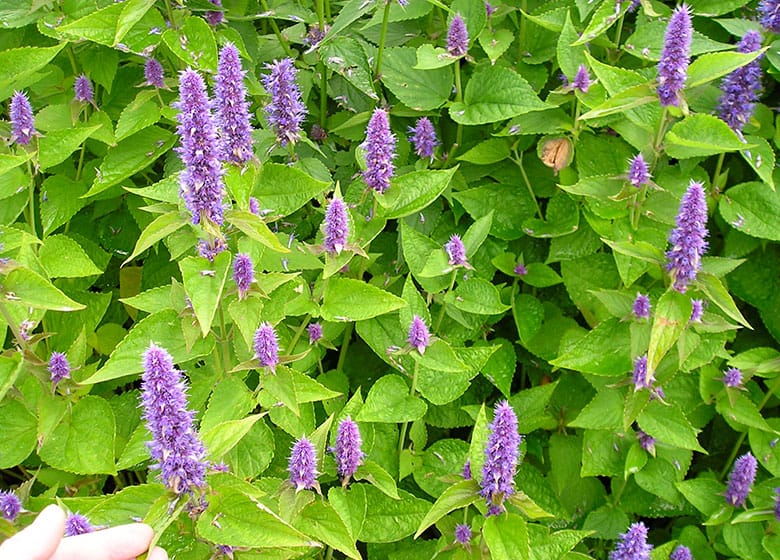
Anise hyssop (Agastache foeniculum) grows as a clump-forming perennial in north and central sections of the state and as an annual in warmer southern sections.
In mid-summer, 2- to 4-foot plants produce 4-inch spikes densely packed with lavender blooms that attract honeybees as well as hummingbirds and butterflies. Deadheading promotes additional blooms.
It gets its common name from the 4-inch long, green, toothed leaves that smell like anise. It grows best in full sun to partial shade and well-drained soils kept moist through water applications.
Black-eyed Susan

Forming 2- to 3-foot mounds, black-eyed Susan (Rudbeckia hirta) bursts onto the scene in summer and fall with a vibrant display of yellow or orange daisy-like flowers with large brown centers.
Deadheading spent blooms promotes more flowers. The perennial grows well in all areas of the state, thriving in full sun and a variety of well-drained soils.
It’s a good choice for seaside gardens as the plant is salt- and drought-tolerant, as well as attracting honeybees and other beneficial pollinators.
Cannas
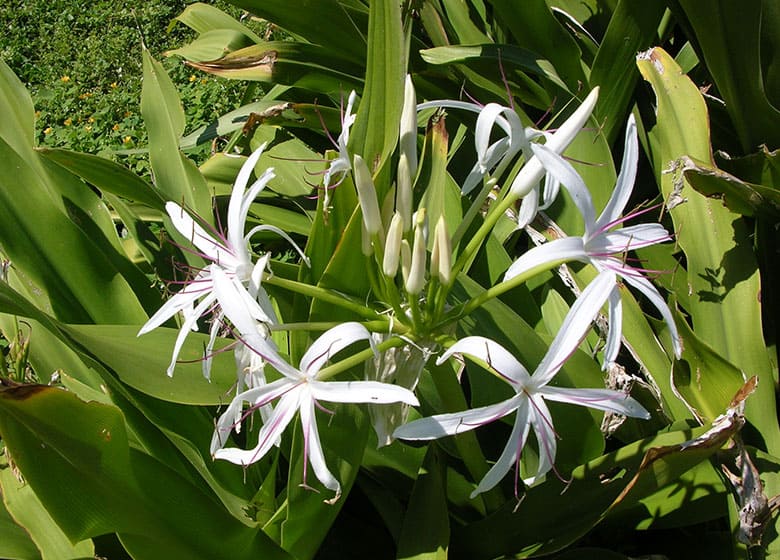
Cannas (Canna spp.) are large tropical plants growing from rhizomes and hardy throughout Florida. Depending on the variety, plants grow anywhere from 1.5 to 8 feet tall and with the paddle-shaped leaves being green, striped in yellow and green, bronze or burgundy.
In spring through summer, spikes fill with showy gladiolus-like flowers in colors of red, pink, yellow, white, orange, and bicolors and attract pollinators like honeybees.
For the best performance, grow in fertile soil kept moist through regular water applications and in full sun.
Coral Honeysuckle
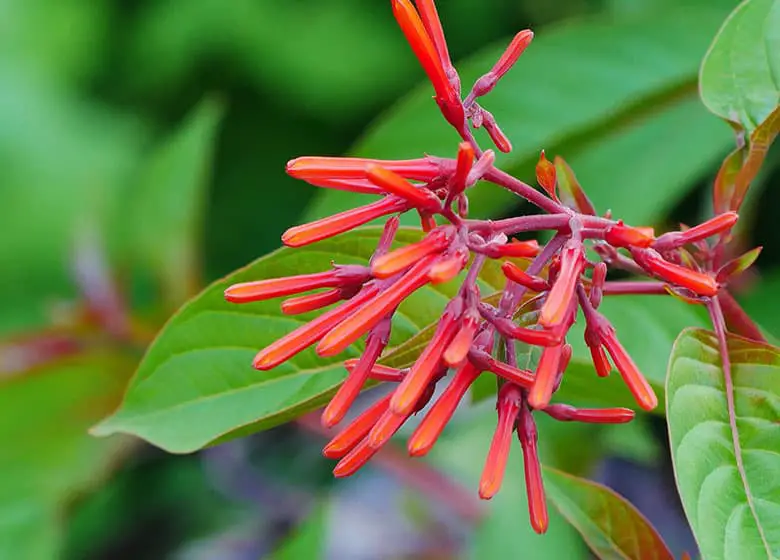
Coral honeysuckle (Loncera sempervirens) is a native vine that grows well in all areas of Florida.
In springtime, long tubular flowers form in clusters and continue blooming through summer, attracting honeybees, hummingbirds and butterflies. Depending on the variety, flowers are coral red or yellow.
The spent flowers form into berries, which attracts a variety of songbirds to the area. The foliage also adds colorful interest, as the top of the leaves are glossy green, with silvery-green undersides.
Coral honeysuckle tolerates sun to partial shade, but produces the most blooms situated in full sun and tolerates a variety of slightly acidic, well-drained soils. It performs as an evergreen in Central and South Florida and semi-evergreen in North Florida.
Lavender
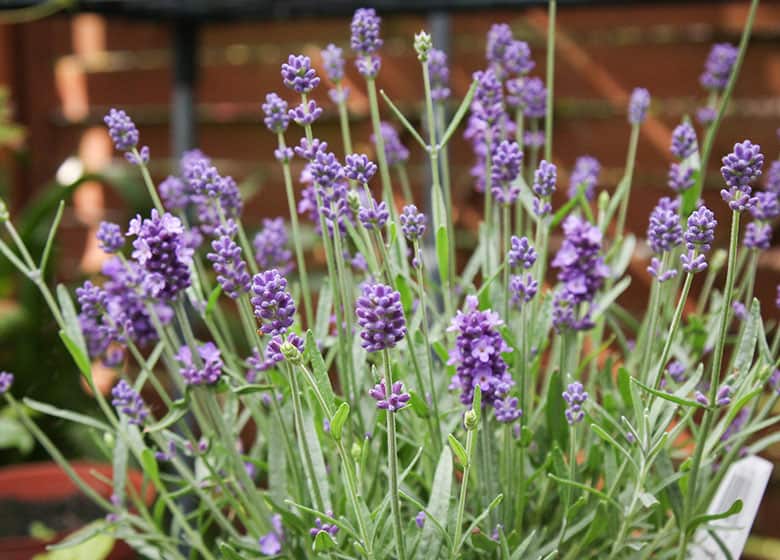
Honeybees are especially attracted to blue and purple blooms, which aside from the fragrant and attractive flowers, makes lavender (Lavandula angustifolia) a great addition to add to a pollinator garden.
Although an herbaceous perennial in North Florida, lavender will most likely perform as an annual in warmer locations of the state. In summer, spikes of purple flowers bloom and are accented by the grayish-green foliage.
Lavender grows 1 to 3 feet tall with a similar spread, performing best in a sunny location and in well-drained and slightly infertile soil.
Marigolds
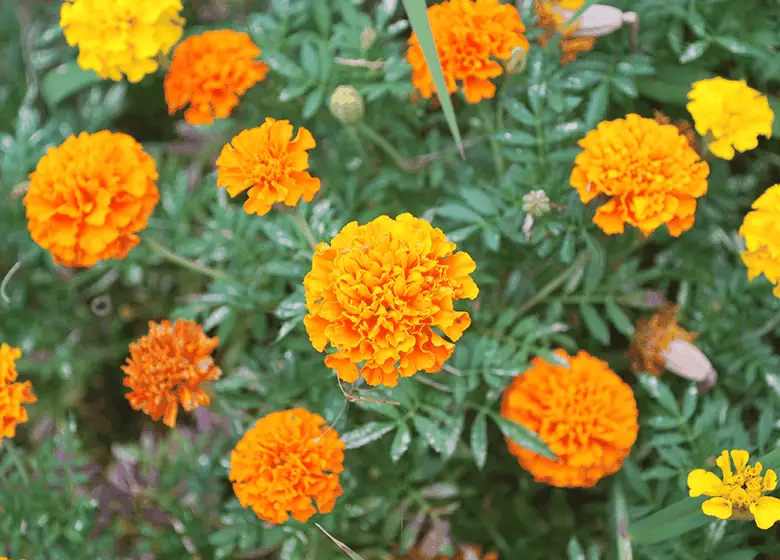
Their ease of growth, ability to ward off garden pests but attract pollinators like honeybees, and brightly colored flowers makes marigolds (Tagetes spp.) an annual mainstay in gardens statewide.
The frilly flowers produced in spring throughout summer can be doubles or singles and bloom in colors or orange, yellow, red, and burgundy. Deadheading spent flowers promotes more blooms.
Depending on the variety, marigolds grow anywhere from 1 to 2 feet tall. They grow best planted in well-drained soil and in a sunny location.
For more info on growing Marigolds in Florida check out this post.
Nasturtium
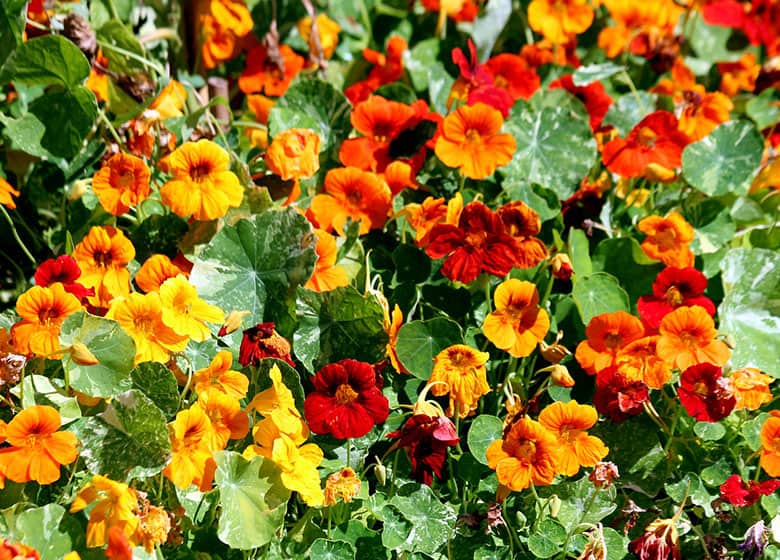
Nasturtiums (Tropaeolum majus) are blooming annuals that work well in hanging baskets or used as groundcovers in gardens throughout Florida.
The climbing succulent is quite attractive with it round, light green leaves growing 2 to 5 inches in diameter. The brightly colored flowers in red, yellow, or orange have five petals and bloom off and on year-round, attracting a host of beneficial pollinators.
As an added bonus, the flowers, pods, and leaves are edible. Nasturtiums grow best in a sunny to partially sunny location and in well-drained soil.
Oleander

Oleander (Nerium oleander) is a low-maintenance evergreen shrub or small tree that brightens gardens in Central and South Florida with its almost year-round flowers that attract a wealth of beneficial pollinators like honeybees.
Oleander has a mounding shape with long branches covered in long dark green foliage. Clusters of brightly colored flowers cover the shrub most of the year and range in colors of white, pink, yellow, red or coral and can be single or double, depending on the cultivar.
The shrub grows 10 to 18 feet tall, spreading about 10 feet, and dwarf cultivars average 4 feet wide and tall. This durable shrub is heat-, salt- and drought-tolerant, growing in even the poorest well-drained soils and thrives in full to partial sun. All portions are toxic.
Passion Flower
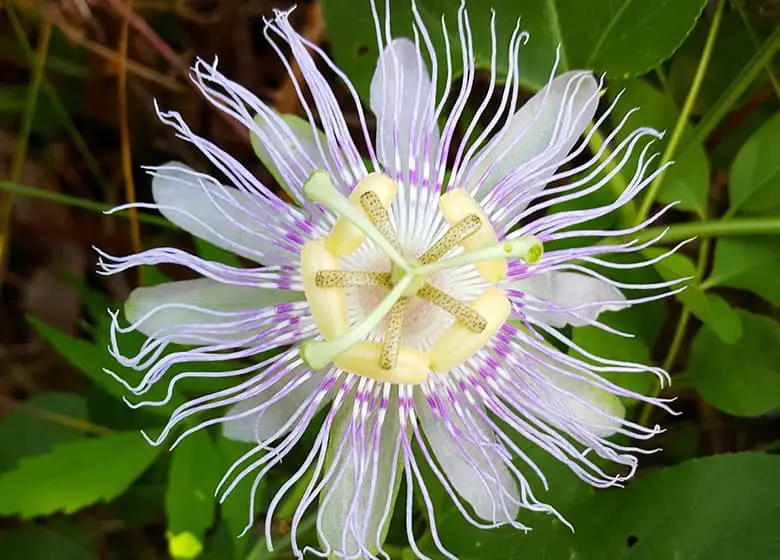
Gardeners throughout Florida can dress up a fence, arbor or trellis with this flowering vine that is also a native.
Although there are several species of passion flowers native to Florida, Maypop (Passiflora incarnate) is the showiest, producing exotic 3- to 5-inch blooms that are purple or lavender and with wavy fringes over the petals.
Flowers last for a day and green oval fruits form after the blooms fade that are edible but said to not taste too good. The blooms attract a host of pollinators from honeybees, butterflies, moths, hummingbirds, bats, and other insects. Grow passion flower in a sunny site in fertile, well-drained soil.
Pentas
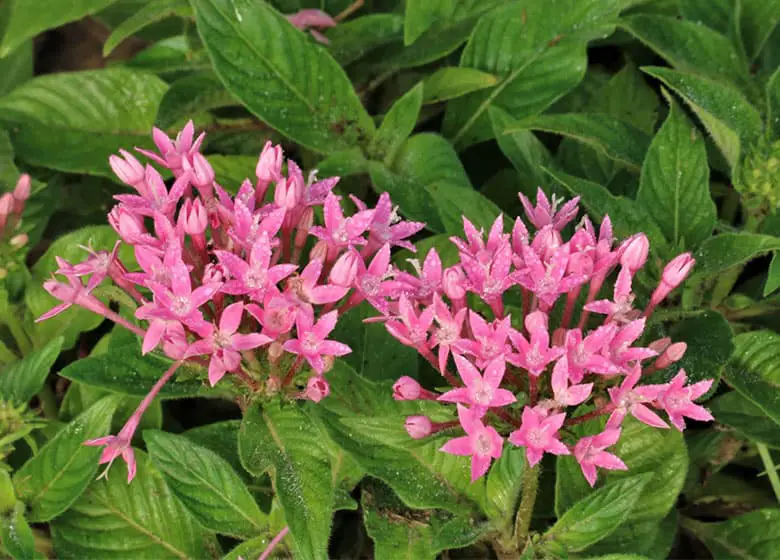
Commonly called starflower because of the profuse clusters of star-shaped flowers, Penta (Penta spp.) is a must-have in pollinator gardens as it attracts honeybees, butterflies, and hummingbirds.
Dark green, lance-shaped, and slightly fuzzy foliage highlight the attractive flower clusters in colors of red, pinks, purple, white and two-toned.
Warm temperatures promote an abundance of blooms. The plant grows 3 feet to 1 foot tall, depending on the variety and performs as a perennial in areas of the state not receiving freezes. Penta prefers well-drained, fertile soil with regular water applications and in a sunny to shadier location, with sun promoting the most blooms.
Purple Coneflower
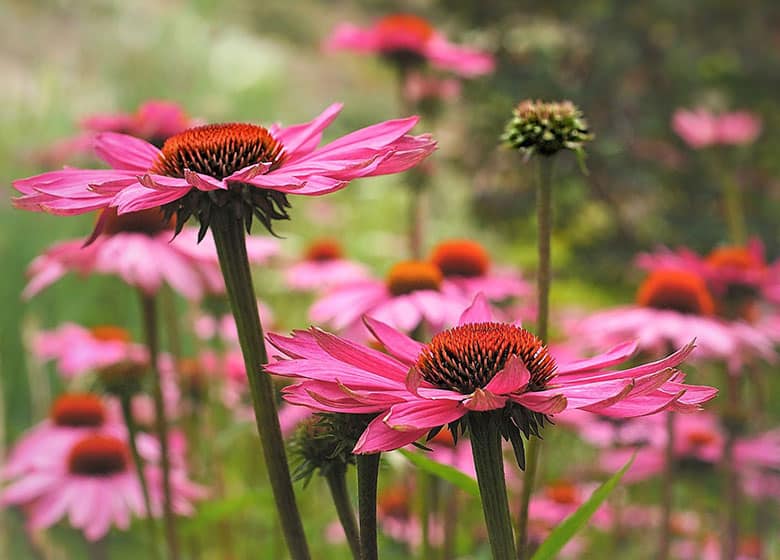
Purple coneflower (Echinacea purpurea) is an herbaceous perennial throughout all but the most southern portions of the state, although many people treat it as an annual.
During winter, it dies to the ground only to regrow in spring. Attractive clumps of lance-shaped leaves highlight the stalks of purple daisy-like flowers with large brown centers that attract honeybees and butterflies.
Blooming starts in late spring to summer and carries on throughout fall. Grow this drought-tolerant beauty in full sun to partial sun and in well-drained soil.
Salvia

Gardeners statewide have hundreds of choices in annual and perennial types of salvia (Salvia spp.) that will have the honeybees and other beneficial pollinators making a mad dash to their cheery and colorful flower spikes.
The two-lipped flowers come in a rainbow of shades and honeybees seem most delighted in the blue and purple varieties, which there are many. Native perennial blue sage (Salvia azurea) produces azure blue flowers summer through fall on 3- to 5-foot plants.
Mealycup sage (Salvia farinacea) is a tender perennial with 8-inch spikes filled with violet-blue flowers summer through fall on 1.5- to 2-foot tall plants.
Both prefer well-drained soils with blue sage preferring full sun and mealycup sage tolerating full sun to partial shade.
Sunflower

Nothing quite gives the cheery and warm feeling like a garden filled with sunflowers (Helianthus spp.).
Choices in sunflowers range from native, annual or perennials types, and come in a wide range of different sizes and flower colors. All have those big petals for resting honeybees love to find in a flower.
Annual types are short-lived and produce stunning flowers up to 12 inches wide, with varieties growing up to 12 feet tall. Perennials like the native swamp sunflower (Helianthus angustifolius) blooms summer through fall with 3-inch diameter flowers with yellow petals and either burgundy or brown centers.
For year-round color, native beach sunflower (Helianthus debilis) works as a perennial groundcover filling with bright yellow, 3-inch flowers with brown centers. Sunflowers grow best in full sun and in well-drained soil.
Walter’s Viburnum
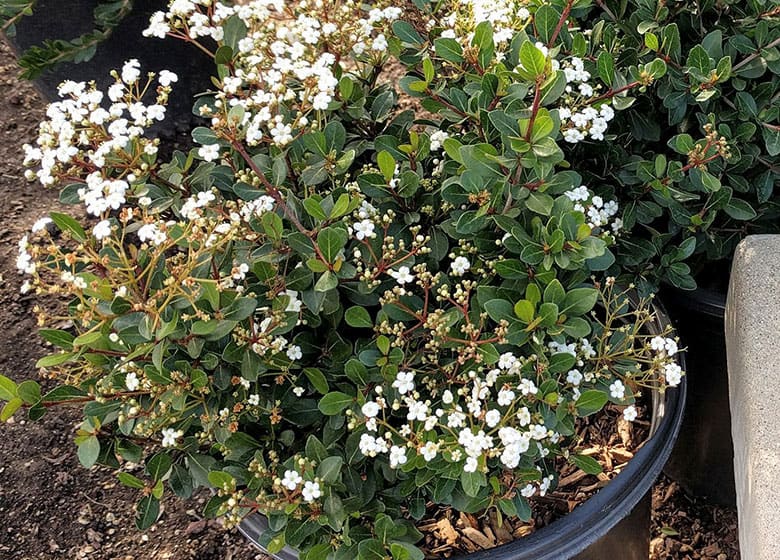
https://www.flickr.com/photos/131880272@N06/37602692445
Hardy throughout Florida, native Walter’s viburnum (Viburnum obovatum) is an attractive evergreen shrub sporting fragrant foliage and covered in a mass of white flowers in mid-winter, and followed by red to black fruits that are highly desired by birds.
Honeybees and a variety of beneficial pollinators are attracted to the blooms. The Florida native grows up to 20 feet tall with a spread of about half the height and is useful as a privacy hedge or screening plant.
This durable and low-maintenance shrub is drought-tolerant, thriving in full to partial sun and in well-drained soils.
You will probably also be interested in:
